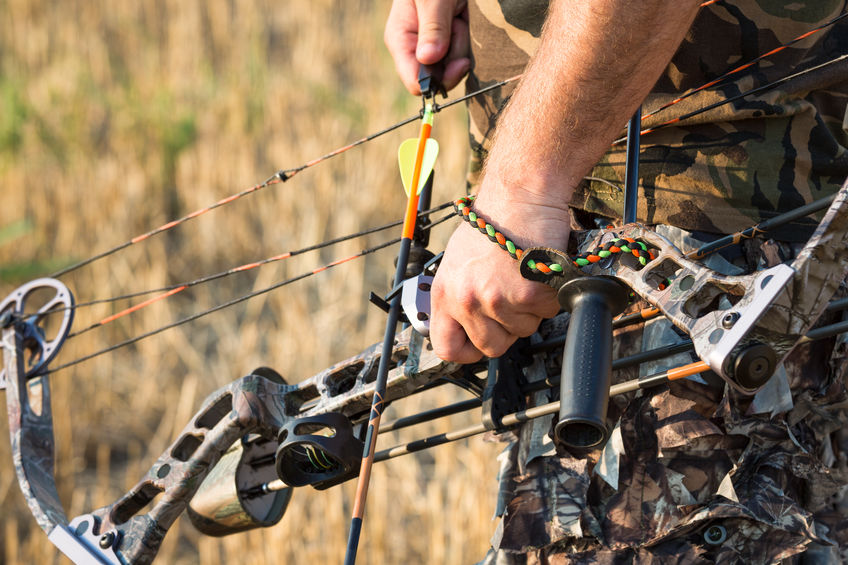
Seasoned hunters are always looking for their next challenge. You might switch up your environment and travel to a new hunting spot. Or maybe you’ll start to target bigger or more elusive game. But perhaps one of the most thrilling challenges experienced hunters are drawn to is mastering a new weapon.
Bowhunting is the perfect opportunity for a hunter who has seen it all to develop a new skillset, connect with the instinctual roots of the hunt, and get outside of their comfort zone. The first thing you’ll need to succeed as a bowhunter? The right bow! Let’s go over a few bow basics to get you started.
First and foremost, buy a bow that fits you.
If you’re serious enough about getting into bowhunting to invest in your own bow, buying something used online just isn’t going to cut it. If your bow isn’t properly fitted, it’s going to be difficult to operate it correctly (or even at all) and be successful on the field. Therefore, your first step when buying a bow is to get measured by a professional.
To determine your ideal bow size, a professional will measure your draw length and help you estimate your draw weight. Your draw length is the distance of your outstretched arms from middle fingertip to middle fingertip, divided by 2.5. Determining your draw weight is mostly a process of trial and error. You’ll want to go with a bow you can comfortably pull back without straining. Once you know your draw length and weight, shop around at different stores and try out different brands and designs to see what feels best.
There are four types of bows for you to choose from.
Your bow should be selected based on your hunting style and the game you’re looking to target. Bows typically fall into one of the following categories:
Compound Bow
This is one of the most commonly used types of bows, although not necessarily for hunting. A compound bow is designed to hold more of the weight of the draw and reduce the amount of pressure on the shooter. Because you’re holding less weight, you’ll have more time to aim and hold a draw. The added power you get from holding your draw makes the compound bow a good option for long-distance shooting.
Crossbow
Of all the bow types, the crossbow is the easiest to use. You simply cock the bow back and pull a trigger to release the arrow. A crossbow also yields a lot of power and provides a more accurate shot. Plus, there’s less movement required to shoot one, so there’s less of a chance you’ll spook your prey.
Longbow
When you picture someone using a bow and arrow, the longbow is probably the image that comes to mind. It’s the most traditional and simple in design—one straight piece of wood that only curves when you attach the string. A longbow can be made to various lengths (long, compact, or in between) and is designed for a quick draw and release. Unlike more modern types, the shooter is holding the full weight of the draw when using a longbow, and thus requires a lot of strength.
Recurve Bow
The recurve bow is very similar to the longbow, except that it curves at each end. It also requires the shooter to hold the full weight of the draw, but the more you practice, the deadlier it is. If you opt for a longbow or recurve bow, start with something light and move to heavier bows as you build strength with practice.
You’ll also want to acquire a few essential bow accessories.
As a hunter, you already know that most weapons can be outfitted with a ton of accessories. Not all of these extras are necessary for successfully using it, but that doesn’t mean someone won’t try to sell them to you anyways. When you purchase your first bow, these are the accessories that you will need to have (or that are helpful enough to be worth buying):
- Arrows—research the best material, arrowhead, and weight for your target game, choose length based on your draw length
- Arrow Rest—supports the arrow during draw and release, choose one that fits well with your shooting style
- Bow Sight—designs can be advanced but as a beginner, it’s best to start simple with a pin sight (mounts on your bow and can be adjusted to zero in on game)
- Bow Release—holds string on draw (instead of your fingers) to help stabilize the arrow for accurate shooting
Once you have all the right gear to get started with bowhunting, you’ll need a good spot to try it out. While many of our guests at Lawrence Bay Lodge often choose to hunt with a rifle, the massive bull moose and black bears that roam our hunting grounds make perfect targets for a new bow hunter.
Give us a call at 701-262-4560 to book a guided moose hunting trip this year and experience the adventure of a lifetime!

